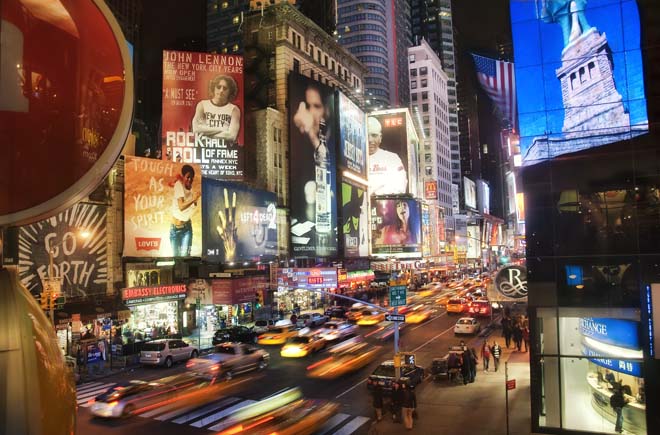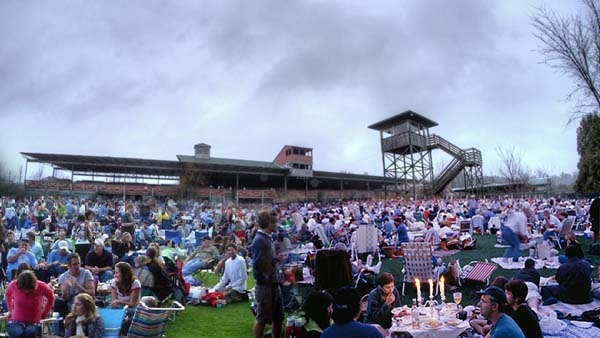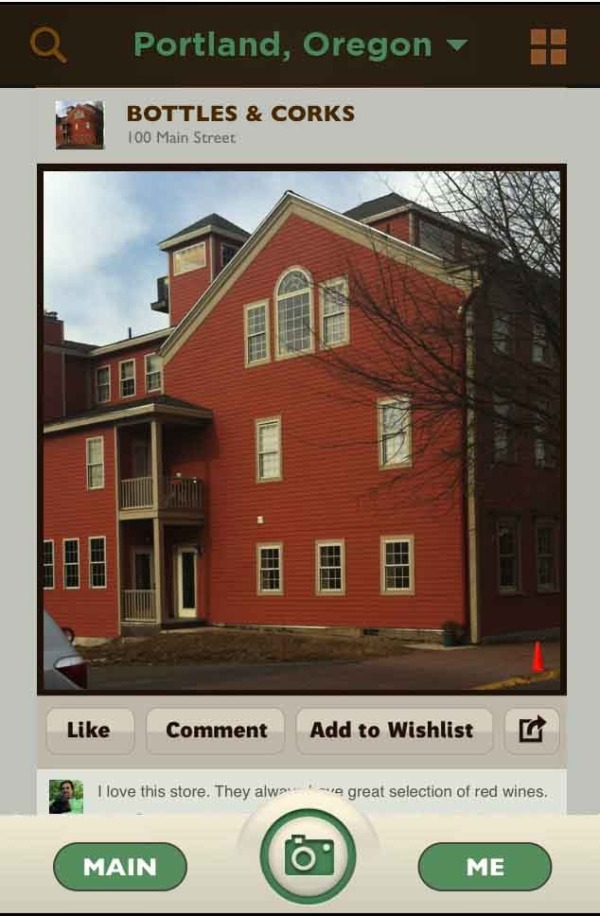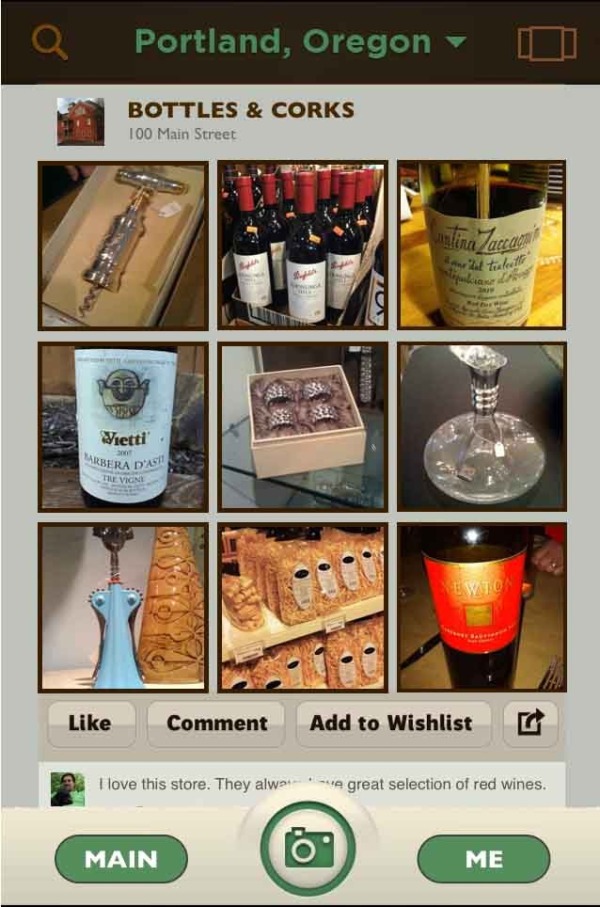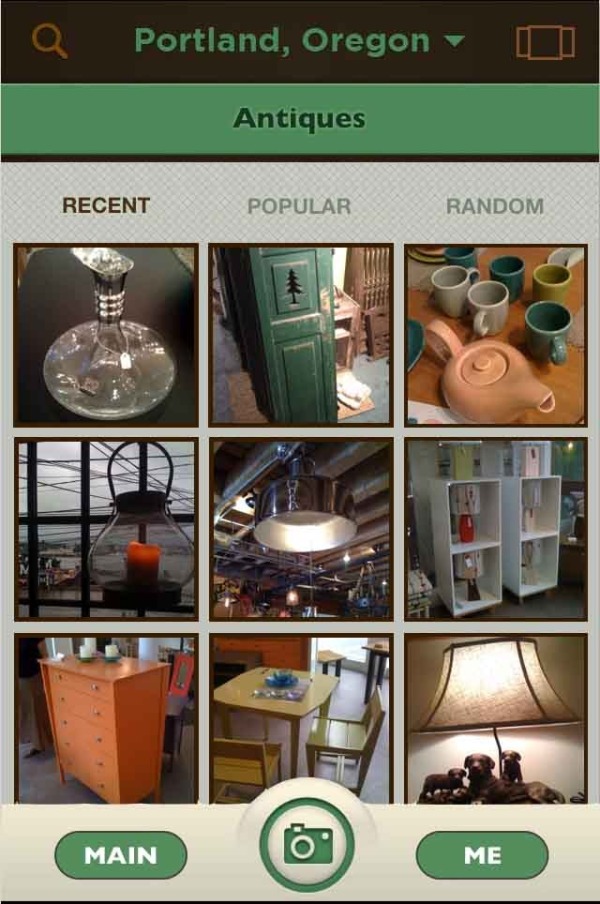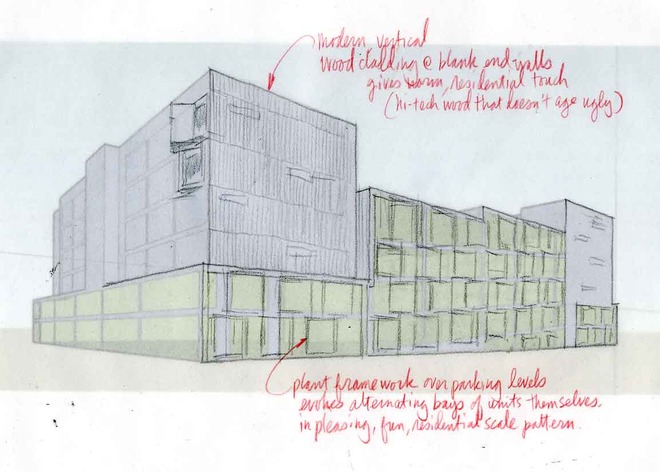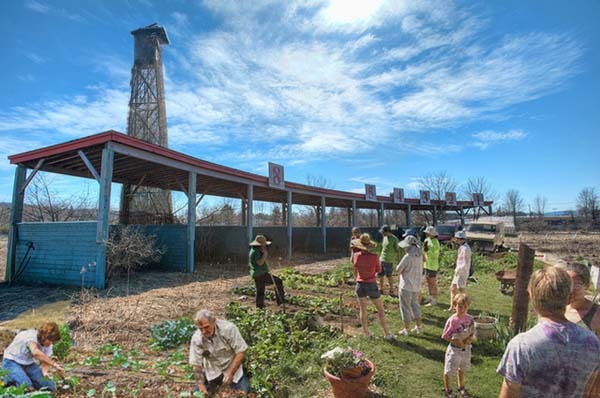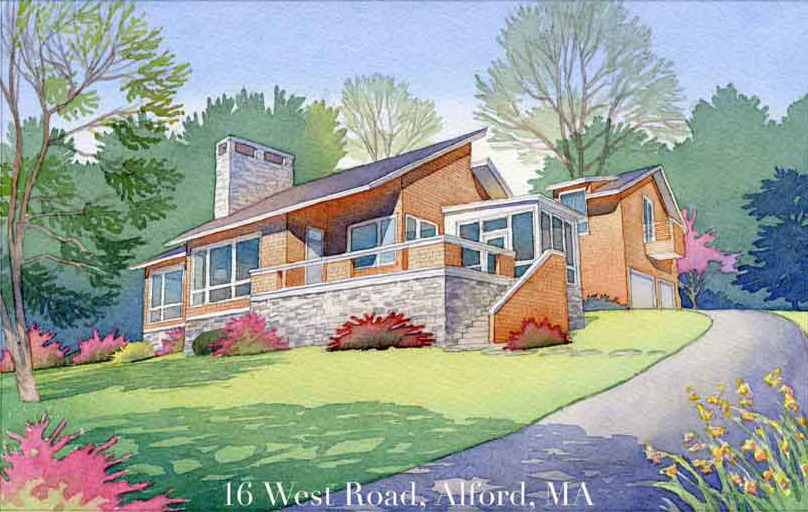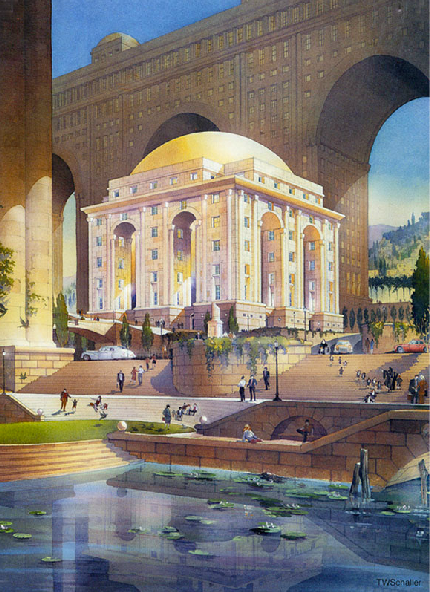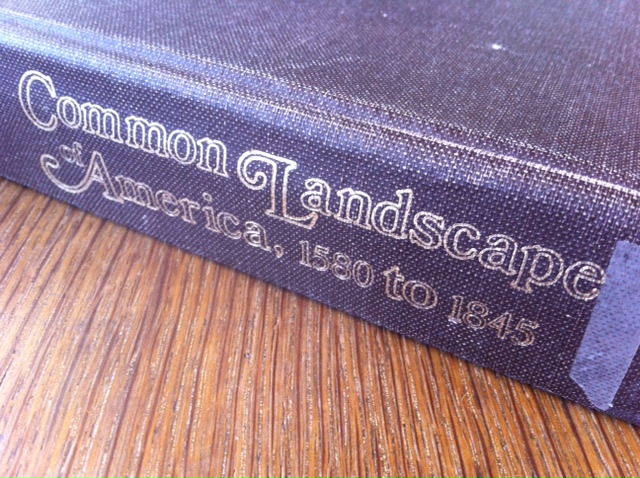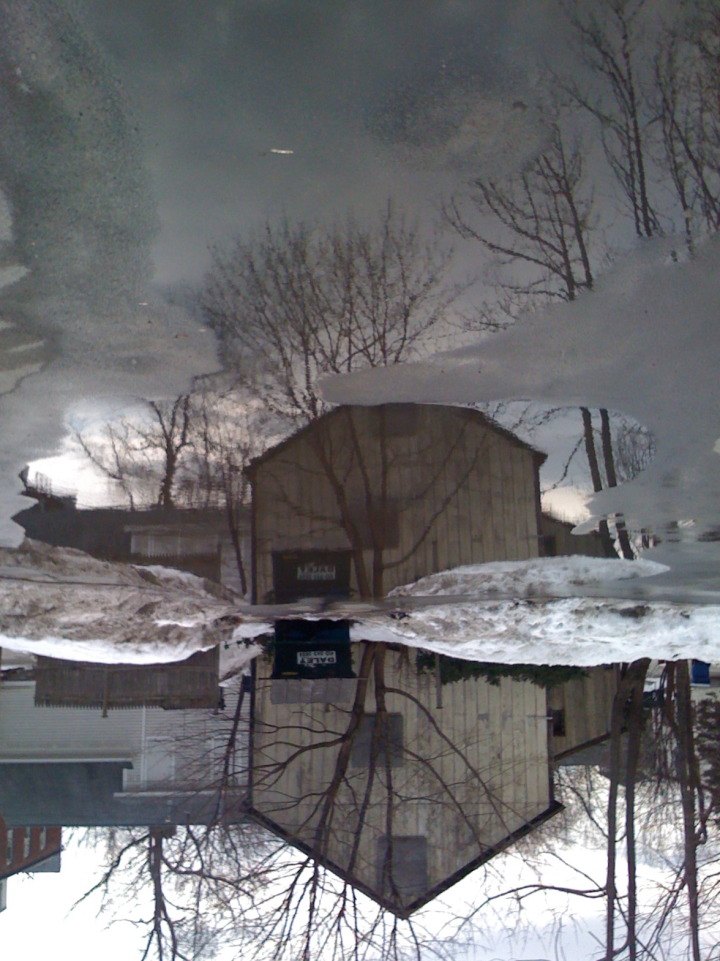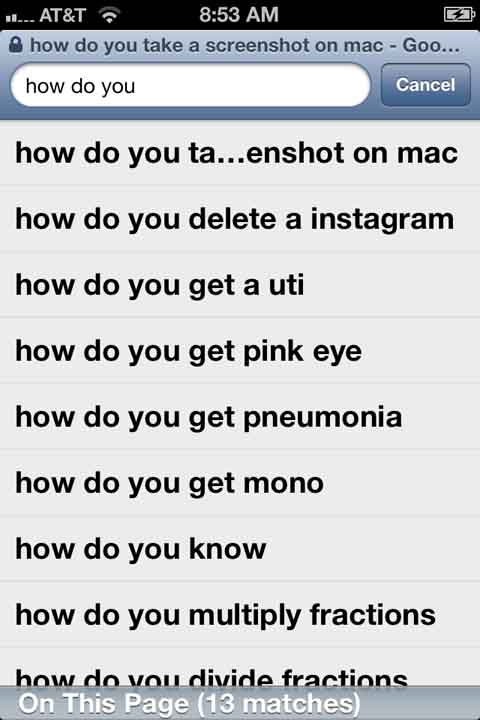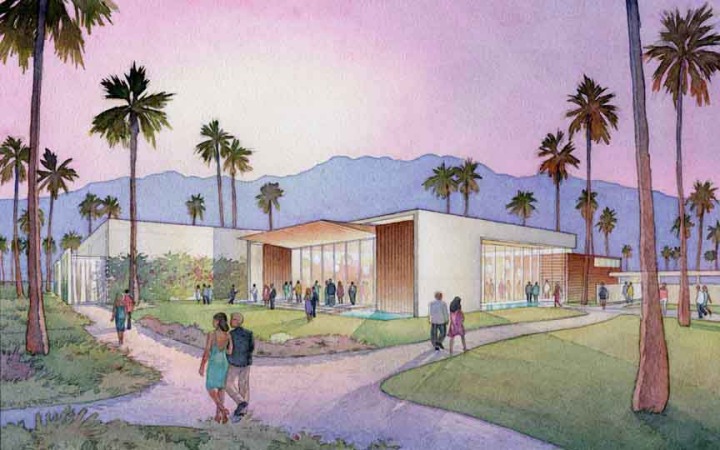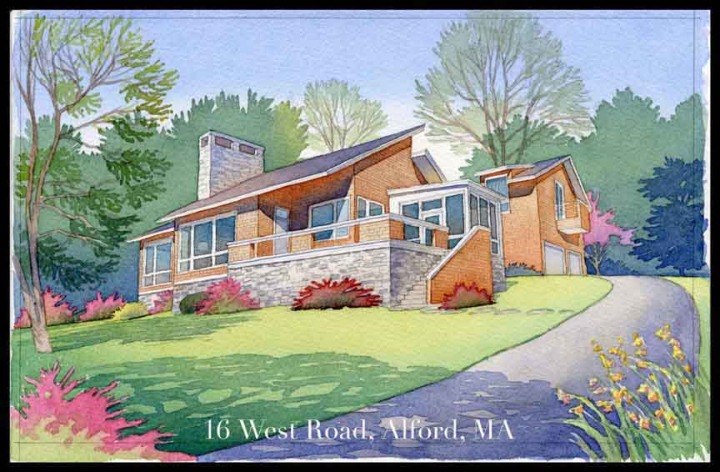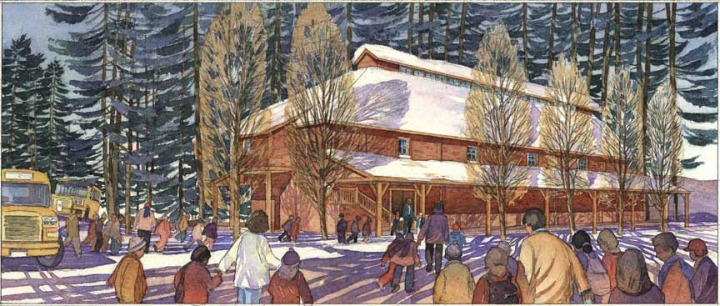A couple of years ago, in 2008, when the financial crisis hit, there was no work in what I do. It just dried up. Actually it didn't just dry up, but at the NYC firm where I did most of my architectural rendering and storyboarding there was only enough work for two people that did what I do and maybe three and I was the fourth guy who lived far away in the Berkshires and who was, if I'm not being too paranoid, just more difficult to work with than the two guys that lived right there in Brooklyn and didn't have families and worked harder than I did and were more talented than I was (no, seriously) so my work just dried up. That's when my wife and I decided we should do something to take our minds off the crisis and do something positive for the world, or at least stay busy like artists do.
 The internet changed the way we shop.
The internet changed the way we shop.
So we came up with this idea to use technology to help local business, which were actually our neighbors in a way but also the people who took the chance to run an independent business which actually made the town nicer to live in and paid taxes and hired local people, so you can see that despite the usual complaint that most people would say that local businesses charge too much, they actually probably don't, considering that they provide instant gratification and service and keep Main Street alive and keep your town vital which probably helps with real estate values.
 It delivered a world of infinite convenience and selection to our fingertips,
It delivered a world of infinite convenience and selection to our fingertips,
It's all just tied up in knots of complexity which are never as simple as it seems. But of course online shopping really messes all that up, and I wouldn't blame you if you were already mad at me, because it's hard to tell someone that they should support local brick and mortar business when they can just say "No, Amazon is so much cheaper and it's too hard to think about that all those other things you say about supporting taxes and school plays and besides, the last school play wasn't that good anyway," (although as an aside I was always amazed when we lived in Summit, NJ and even now living up here in Great Barrington which is the Berkshires how good your average high school play or musical has become, most likely because MTV or something has empowered every generation since after people my age that singing and even dancing but mostly being on stage was not showing off but was self esteem that you should do).
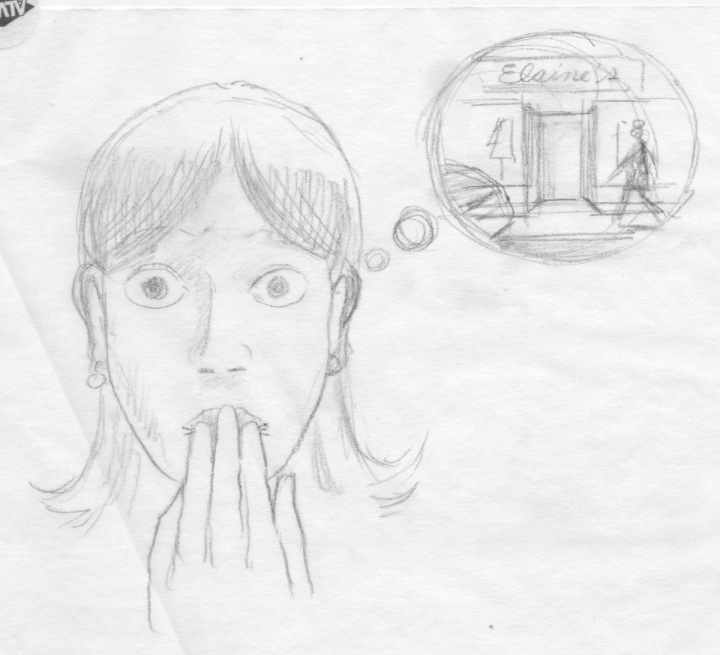 but it didn’t deliver the whole world. In fact, there is a world of remarkable products and services that still remains invisible to online shoppers:
but it didn’t deliver the whole world. In fact, there is a world of remarkable products and services that still remains invisible to online shoppers:
So we thought about the problem and one of the things we came up with was that local business loses a lot of business for the really simple fact that everybody always shops online these days and gets their stuff that way, and there's a lot to be said for that except for the bad things I suggested above, and but the stuff that local business sells right downtown doesn't even appear online, meaning that even though their phone numbers and addresses do and maybe a few photos, that photos of the actual every little things they sell don't appear as fast or in good pictures as the stuff that we buy online from the comfort of our own living rooms on Amazon and in our kitchens. So of course you're not going to buy it locally if you can't even see it online and you're actually shopping at Amazon, or just windowshopping online to know who else has it like Target if you don't like Amazon, because it's not there and its shop keepers who are like us and not like corporations can't afford it to be there, or if you were like our friend Lauralee Epstein who hates to buy her grandkids stuff from online when she could buy it locally here and support Great Barrington, but she just doesn't know what they want in NYC, when all the stores she likes are here and she doesn't have a wishlist, which there is no reason why we couldn't do and you'll see that in a second.
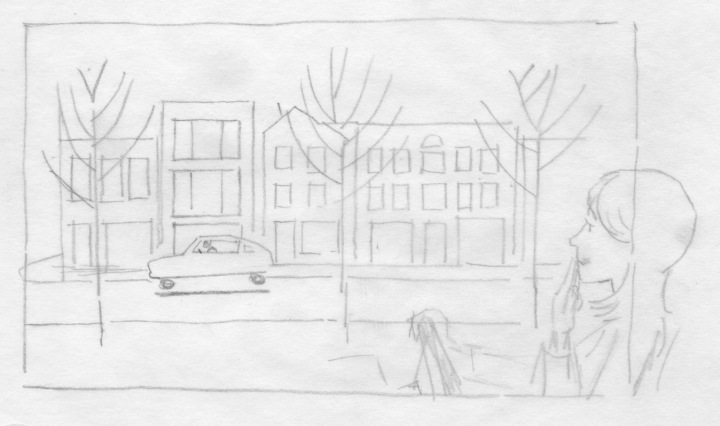 Main Street! That’s right, despite all our advances in technology, online shoppers still can’t see most of what’s for sale in the brick and mortar stores around them,
Main Street! That’s right, despite all our advances in technology, online shoppers still can’t see most of what’s for sale in the brick and mortar stores around them,
In fact you're probably not even going to think about getting what you want to buy online locally because it's like two different worlds--the new world where you buy stuff online that's in your house and you can do fast, and the old fashioned world where you have to go downtown and buy it if you can even find it or if you have the time to go into a lot of stores first but risk getting frustrated that it's taking so long, although not everyone feels that way but I know I do, which is why I'm still wearing a lot of stuff I've had for years unless someone buys me something which I rarely do for myself.
 so even online shoppers who would love to support local default to Amazon, Target and the online retail giants that steal downtown shoppersSo even if you wanted to support local business which a lot of people do, you probably are beginning to do it less and less, and especially our kids aren't going to do it anymore unless we come up with something really clever that tricks them into doing it or makes it more fun like Instagram or Angry Birds, and if that still does good for the world like local food that's even better. Otherwise we're not going to have any downtowns left! Or every downtown will look like really built up places or like the suburbs near Denver where CVS and Revco are on every corner and there are no more really cool little stores, just Starbucks chains, which I seriously hope you aren't thinking to yourself that that wouldn't be so bad given everything i've just been talking about? Because if everything is chains, then the money that they make goes back to the state where they have their corporate headquarters and doesn't stay in the local economy to help schools or anything which has a lot of bad things about it if you follow links to places that research it and talk about it.
so even online shoppers who would love to support local default to Amazon, Target and the online retail giants that steal downtown shoppersSo even if you wanted to support local business which a lot of people do, you probably are beginning to do it less and less, and especially our kids aren't going to do it anymore unless we come up with something really clever that tricks them into doing it or makes it more fun like Instagram or Angry Birds, and if that still does good for the world like local food that's even better. Otherwise we're not going to have any downtowns left! Or every downtown will look like really built up places or like the suburbs near Denver where CVS and Revco are on every corner and there are no more really cool little stores, just Starbucks chains, which I seriously hope you aren't thinking to yourself that that wouldn't be so bad given everything i've just been talking about? Because if everything is chains, then the money that they make goes back to the state where they have their corporate headquarters and doesn't stay in the local economy to help schools or anything which has a lot of bad things about it if you follow links to places that research it and talk about it.
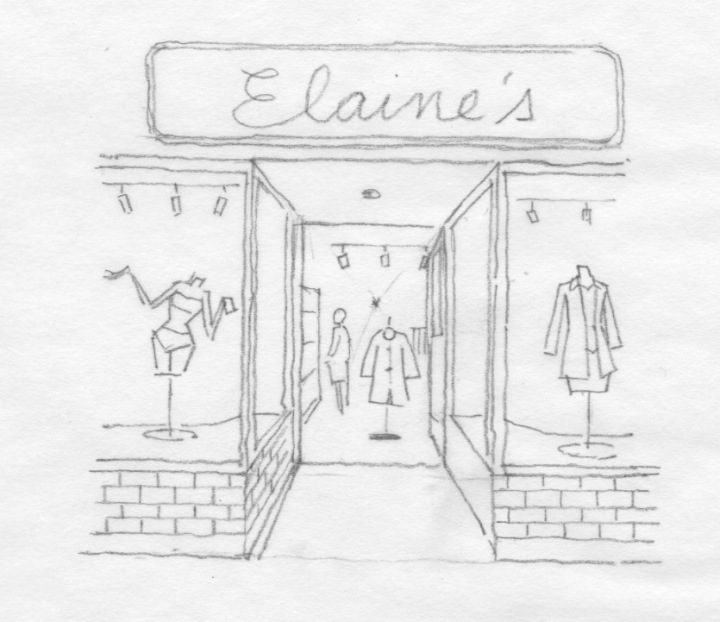 and put the continued existence of local independent shopping at risk.
and put the continued existence of local independent shopping at risk.
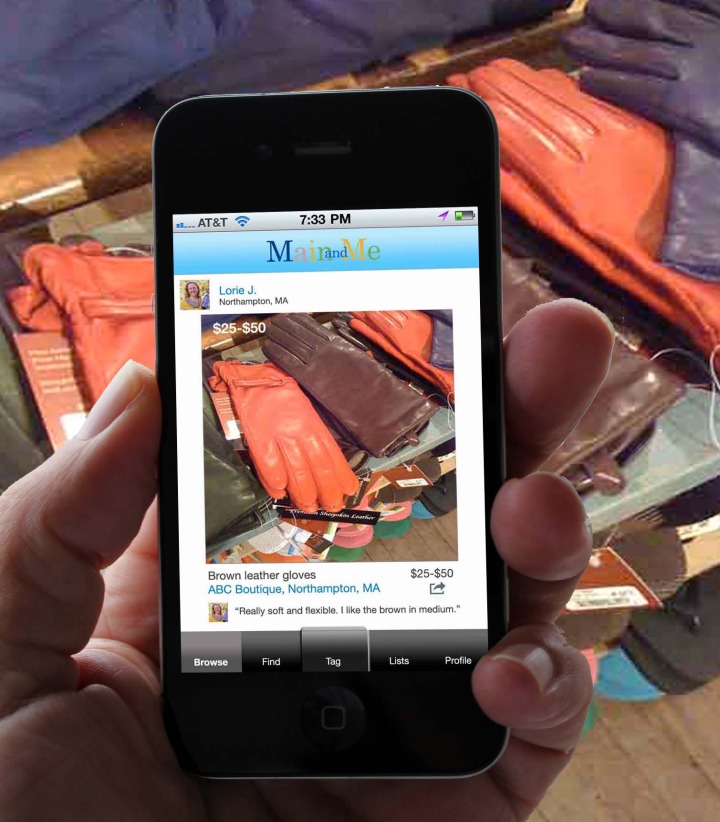 Or at least they did until now. Introducing Main and Me,
Or at least they did until now. Introducing Main and Me,
So even if you wanted to, you just can't see what's for sale downtown because no or almost no independent shop keepers has the money or time to put photos and descriptions for search engines of all their stuff online especially when they have families and kids that need to do homework and have dinner. But what if they had help from accidentally everybody who liked to do all this photo sharing stuff people do now or add stuff to wishlists they selfishly made for themselves, at least at first, or also everybody who supports local shopping or the idea of it as long as there was no skin off their back, or if it was fun like a game? The shop keepers could still do it on their own using this idea if they didn't want people taking pictures in their store, but what if the ones who were still old and cranky and didn't want to change and put photos of their stuff online but were not helping the big picture of getting your whole town online, what if it was fun to help them and they accepted it, or at least the next generation of shop keepers just said, Oh yeh, of course that makes sense like Yelp did or Facebook did to our parents and now look at how everyone uses those? And besides they're not any more technical than you and I and they hate having passwords they forget so even if they could be online it probably wouldn't last very long because they would just have stuff to do like us and forget their passwords and then just say "Forget this, I'm going to run my store the old fashioned way and just have people come in and buy stuff and be nice to them so they always come back next Thanksgiving when they're up here again and don't necessarily want to hang out with their brother-in-law who likes George Bush on Thursday morning, or the day before and after Thanksgiving if they're staying for a couple of days.
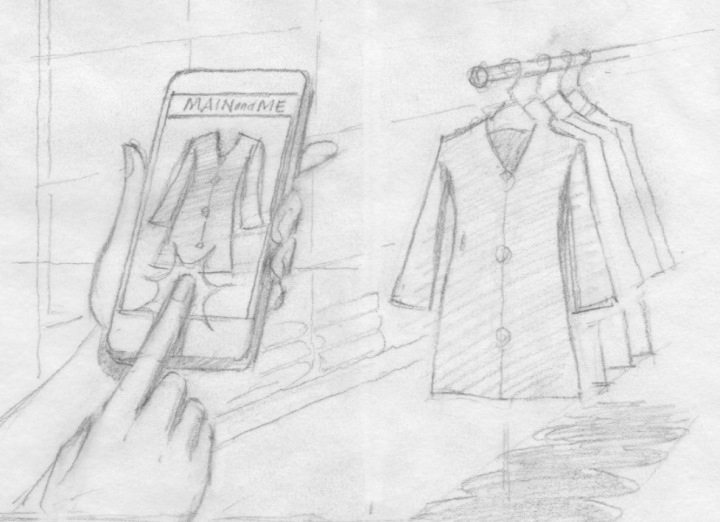 the free-to-use mobile and web app that makes it as simple as “snap...
the free-to-use mobile and web app that makes it as simple as “snap...
So, in a nutshell, local stores are definitely not in the 20th century yet. They're still doing so much the old way and in the meantime Amazon is taking away their business because Amazon and Walmart are always doing stuff the newest way and that's the way a whole new generation of digital natives is learning to do stuff, too, like our kids if you're older, and Foursquare and Yelp and Instagram like I said, but not Facebook so much because that is really getting creepy the way Mark Zuckerberg is never asking for permission to show stuff about you to advertisers, so the future is in trouble, too, which is why you hear a lot of otherwise well-meaning kids who like gay marriage and other things that are good for Democrats still shopping at Amazon even though they don't know yet that that's politically uncool, or hopefully will become really uncool like wearing fur and sugar or spending too much time on Facebook pretty soon, and buying locally has this really practical message like local food that says "Hey, this isn't just kidding around or something online, this is actual," or it could be if we get this message out.
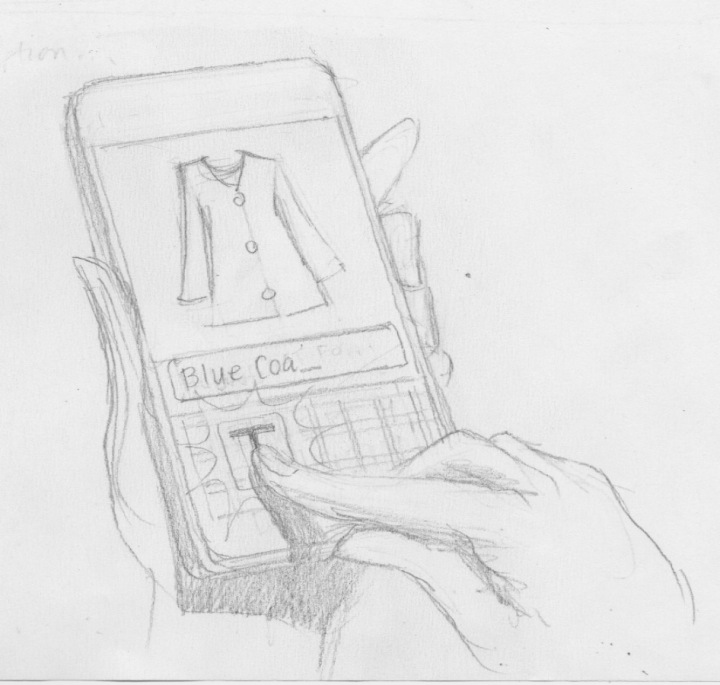 caption...
caption...
So that's when we got the idea to make it as easy as snapping, captioning and checking in a photo to start an online store for yourself if you didn't have one with as many photos as you wanted and hopefully even every single thing you sell, because why not, you could just ask that high school kid that works for you to use their smartphone to do it if they were just going to be doing their homework anyway in the afternoons, and then take all the stores in the same town that started their own page and automatically put them also into a page for your whole town, so that you could either shop store by store or windowshop the whole town all at once like if you were going to Cape Cod that weekend and you wanted to see what was the cool stuff for sale in their stores before you got there, or any place else since we would want the whole country to do this to revolutionize local shopping and make it just as powerful as Amazon. Btw, did I mention we wouldn't let Amazon on? or other national brands since they already have the resources and this would just be for local shopping since that's the world of shopping and the stores that helps our actual places where we live.
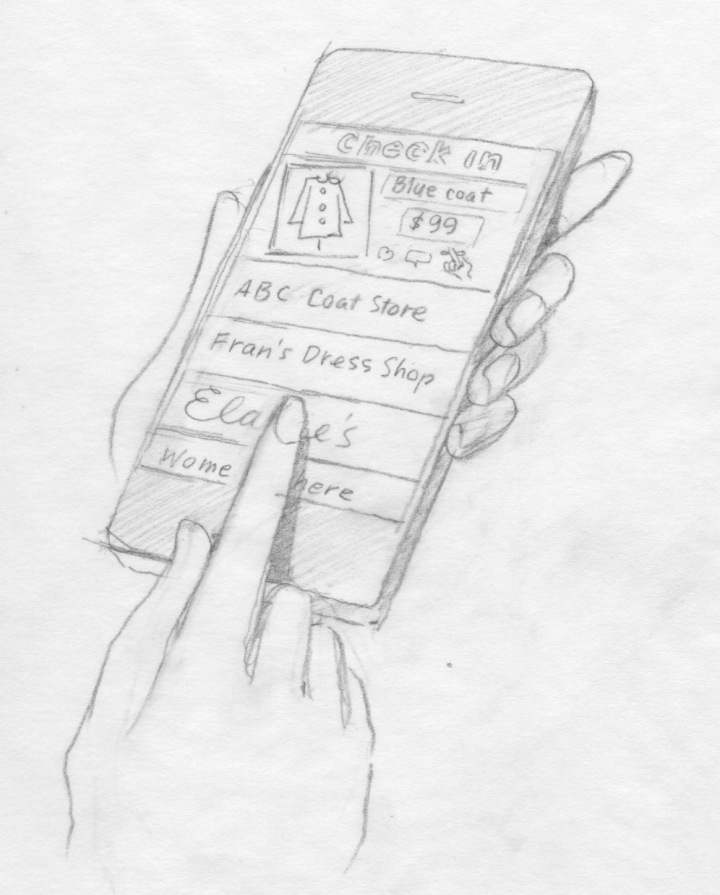 and “check in”...
and “check in”...
So we thought, let's do this! Let's use something fun that everybody does anyway to do this not-so-accidental really positive thing of also putting everything for sale at local brick and mortar stores of every town online to help out local stores--which is why we call it "Main and Me" instead of something like "Me and Me" which would be all about Me like everything seems to be these days--so that whenever people start shopping online, the stuff that's for sale locally shows up just as first as Amazon. So that's how Main and Me was born, which is hoping to someday tap into the energy like the local food movement where people say you should eat locally because my friend grew the lettuce and it cost less gas to get it here, so the same way you can shop locally and make your town healthy, even though there are a lot of detractors in this world, too, that say the price will always be too high, or that it doesn't always save gas to not use overnight delivery or UPS, or like my one friend who says even buying stuff is bad because we don't need more stuff and if you do you should buy used stuff that's just as good as new on eBay, and she does.
(to be continued)
 for resource-challenged merchants and downtown directors to begin putting Main Street online in a day.
for resource-challenged merchants and downtown directors to begin putting Main Street online in a day.
 My thanks to my friend Chad Rush for his help in coloring this puppy
My thanks to my friend Chad Rush for his help in coloring this puppy Here is the original pencil tone drawing of a proposed nightclub terrace in Las Vegas. (Architect's name withheld by request)
Here is the original pencil tone drawing of a proposed nightclub terrace in Las Vegas. (Architect's name withheld by request)




